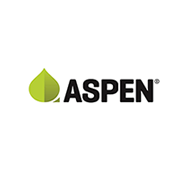Svensk Plaståtervinning runs Europe’s largest and most effective plastic recycling facility. With headquarters in Motala and 35 employees, they’re now building Site Zero – the world’s largest modern facility for plastic recycling. The company works towards making Sweden reach a total of 55% recycling of all plastic packaging, five years earlier than the EU goal. And with ambitious goals and great development, it’s crucial their maintenance organisation runs like clockwork.
Maintenance without structure
The maintenance organisation within the company followed no maintenance standards, and the documentation after a performed job was poor — a couple of lines in Excel, no structure, integration, or connection to anything else. And the maintenance manager had grown tired of using a combination of Outlook and Excel to manage his and his team’s days.
Anders Carlberg, the Production Technician at Svensk Plaståtervinning, noticed the problems early.
They used Monitor as a business system for things like inventory management. The program has a maintenance module for a very attractive price. Anders started there but quickly realised it’s going to be hard – both administratively and for the people using it.
Svensk Plaståtervinning needed a new maintenance solution that could integrate with their business system. Anders got the main responsibility.
A simple choice
Many of the people in the maintenance organisation were comfortable using maintenance systems from working at previous companies. And the system they mentioned most often was MaintMaster.
“There are many people in maintenance that have worked with MaintMaster. And as it turned out, MaintMaster was that good that we didn’t need to try anything else.”
The choice was simple when so many people had experience with it. It’s also a well-established system in Sweden with many users. It was clear in the implementation and testing phase that the interface was flexible and easy to use.
“Made for maintenance”, adds Anders.
And it’s logical to use for people with Word and PowerPoint experience. But he adds that the copy-and-paste way of working might feel difficult to use for people who haven’t posted pictures in PowerPoint before.
But even though it was clear that MaintMasters maintenance software was the right choice, they needed to convince the financial department of their strong belief in the system, and that integration into their business system would work. Another determining factor was that MaintMaster could support financial statements and other financial processes.
The maintenance organisation and financial department believed in MaintMaster and decided to go for it – despite the slightly higher price tag than Monitor’s maintenance module.
Building structure
The implementation phase was mostly about creating the branches and structure for their plant and assets. MaintMaster’s team helped Anders with examples and modules. He then created and laid the rest of the foundation with help from technicians. Now they could smoothly navigate their facilities and machines with pictures.
Because they did the shift to MaintMaster during the pandemic, all implementation was remote. One exception was when a MaintMaster technician came on-site to educate the maintenance organisation in the final stages.
And because they had to keep Monitor, a smooth integration was critical, says Anders.
“We had to integrate Monitor that manages inventory, accounting and pretty much everything. The system is integrated but we use MaintMaster as intended.”
After some work, the integration was successful, with stock balance management showing in both systems. A change in Monitor reflects in MaintMaster maintenance software and vice versa.
And spare parts now link to jobs. The technician chooses the spare parts used after job completion that are added to the job and updated in both systems.
Results
With the foundation in place, the implementation was complete. Users can now navigate their facilities assets with simple picture navigation, which Anders thinks is a great functionality that lets him quickly find machines, articles, and information.
Despite short disruptions in the integration, Anders doesn’t have much experience with the support. But the impression is great – which he values highly.
According to Anders, a great benefit is that MaintMaster allows the people in production to enter error messages and codes seen on machines. This functionality gives them a new understanding of what works, what doesn’t, and why.
It also gives the maintenance team great feedback on improvement opportunities so they know what they can prevent and repair before something breaks. And with the ability to add error reports directly in the system, they can easily create work schedules for mechanics.
And because they can now plan jobs, they have a better work overview. Instead of extinguishing maintenance fires, they now work proactively with planned days and maintenance tasks. One example of a scheduled job is the regular oil changes for their gearbox.
“That’s the great benefit of a maintenance system. You can plan everything and work preventative. That’s how MaintMaster works.”
A great part of Anders’s production technician days now and ahead is implementing improvement work. He believes in the importance of working with the technology and getting everyone in maintenance using the system.
“By continuously motivating our staff, actively adding new information, educating and showing the results of using the new system, we get less downtime”, says Anders.
Moving forward, Anders and the maintenance organisation at Svensk Plaståtervinning is adding their new facility to MaintMaster, which will be ready for implementation next year. A few hundred new objects will enter MaintMaster and become a new facility branch. He’s positive they will see impressive results in 1-2 years when all jobs are in the system.






